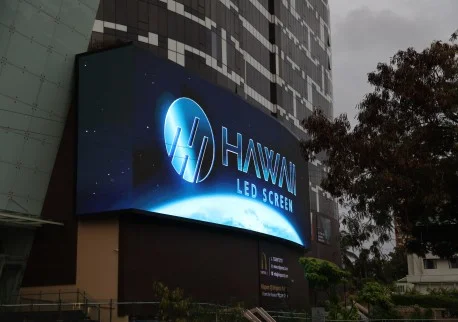Blog Details
MANUFACTURES OF LED DISPLAY

- Posted On 29 Jul 2022
LED Display Manufacturers in india, led screen manufacturers in india, led screen wall in Mumbai, P3 led wall price in india, led video wall in tamilnadu
WHY LED OUTPERFORMS LCD
As you may have realised by this point, there is no question that LED defeats LCD. This is so because, with the exception of price, LED displays are superior in every important purchasing consideration.
Even when pricing is taken into account, you will discover that while LED technology is more expensive, it ultimately offers a higher return on investment. This is due to LED screens' extended lifespan and less maintenance requirements.
]As a result of better picture quality being driven by both technological breakthroughs and user demand, display pixels are constantly changing. Images on TV displays, smart gadgets, and augmented and virtual reality headsets keep getting clearer and more vivid.
Smaller pixels have been produced as a result of the transition from LCD (liquid crystal display) technology to LED (organic light-emitting diode) and more recent miniLEDs and microLEDs, while the quest of contrast necessitates pixels with brighter brights and blacker blacks. Although this change has given consumers better visual experiences, it has also presented display producers with new production hurdles.
Observe how the "dots" (display pixels) in the lower screen (A) are bigger and the black space between them is more noticeable when comparing the various display panels in the image below. The terms "lower pixel density," "fewer pixels per inch," and "bigger pixel pitch" are generally equal in meaning for this display. Since the pixels are not small or closely spaced, less of them can be crammed into a given space.
Size and pitch of pixels
Display resolution can be affected by examples of display panels with various pixel sizes, pixel pitches, and pixels per inch (PPI).
In the above image, the other displays demonstrate how the size of the pixels and the distance between them get smaller as they advance backward. the uppermost/rearmost panel (B)
Modern emissive display technologies, including OLED and microLED, allow each pixel to be powered individually and emit its own light. This can lead to significant differences in colour and brightness from pixel to pixel, posing a quality problem for producers. Regardless of whether it is utilised in a direct-view display or is being viewed through a filter like a quantum dot layer, each pixel must be evaluated independently for performance.
The human eye may not be able to distinguish individual pixels or subpixels at the maximum resolution levels offered by small pixels like microLEDs. Human observers can see when a pixel's brightness (luminance) or chromaticity (colour) varies from another, ruining the uniformity of the led screen and the image.
Therefore, a metrology solution must be able to measure a display as it is seen by the human eye in order to guarantee the visual quality of these displays. But merely detecting uniformity flaws is not sufficient; a system also needs to be able to recognise each distinct micro-sized pixel component. The only way to compute and apply a correction factor to restore led screen appearance is to measure the brightness and chromaticity changes between pixels and subpixels. Once a display device has been fixed throughout production, the producer can release it to the market certain that it satisfies both consumer and brand criteria.
As a result, if you're thinking about purchasing a display for yourself, you should make an LED display your first choice.
Many people consider the LED to be a third-generation display. It largely satisfies the needs and desires of the younger generation.
Moreover, they are more beautiful. What better solution to the growing lack of space in new residential complexes than an ultra-thin LED display that offers a cinematic experience in the comfort of your own home?
Across generations, LED screens are the most popular option now among the general public. To improve their lives and make them more fun, everyone is choosing to move from LCD to LED.
